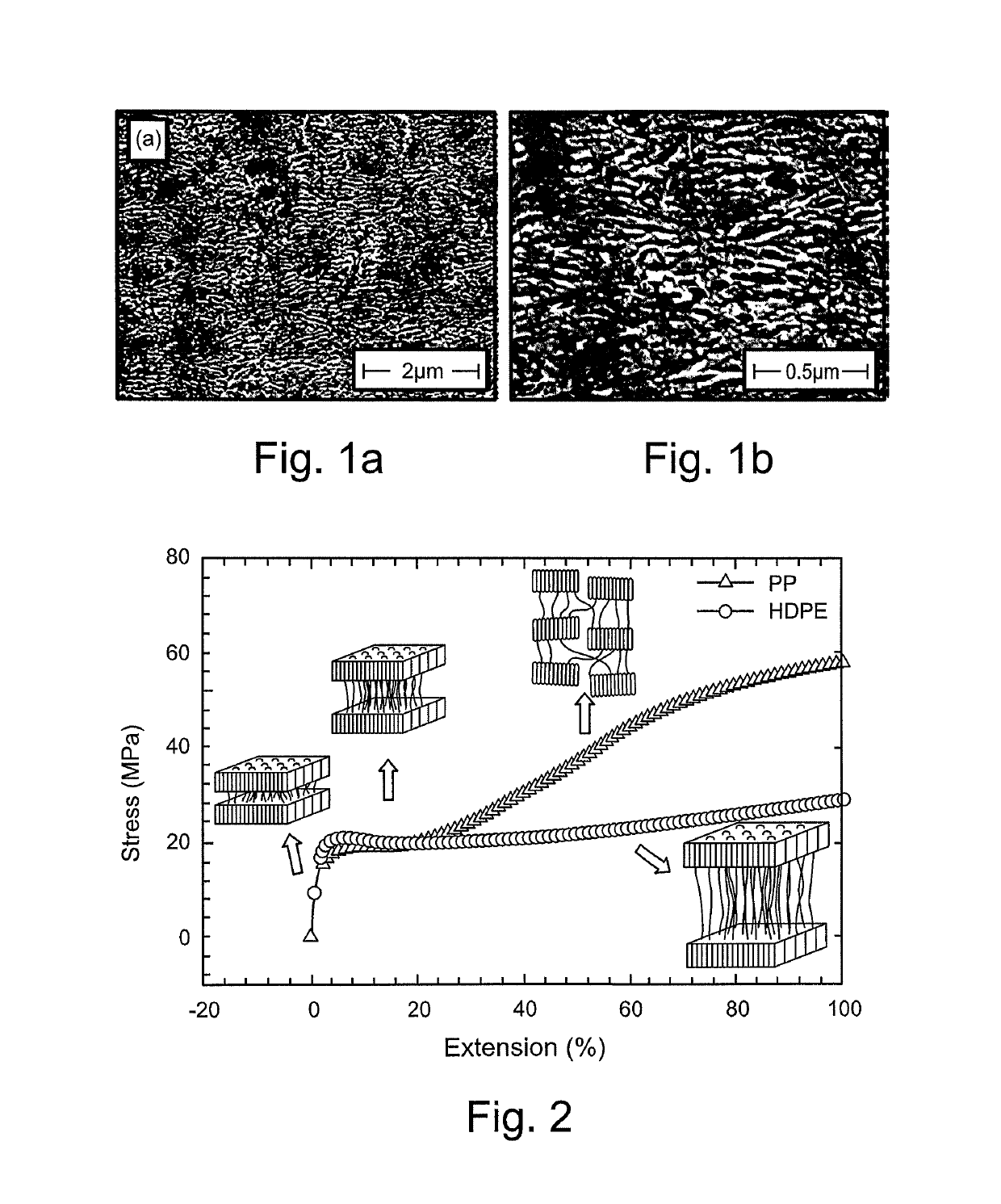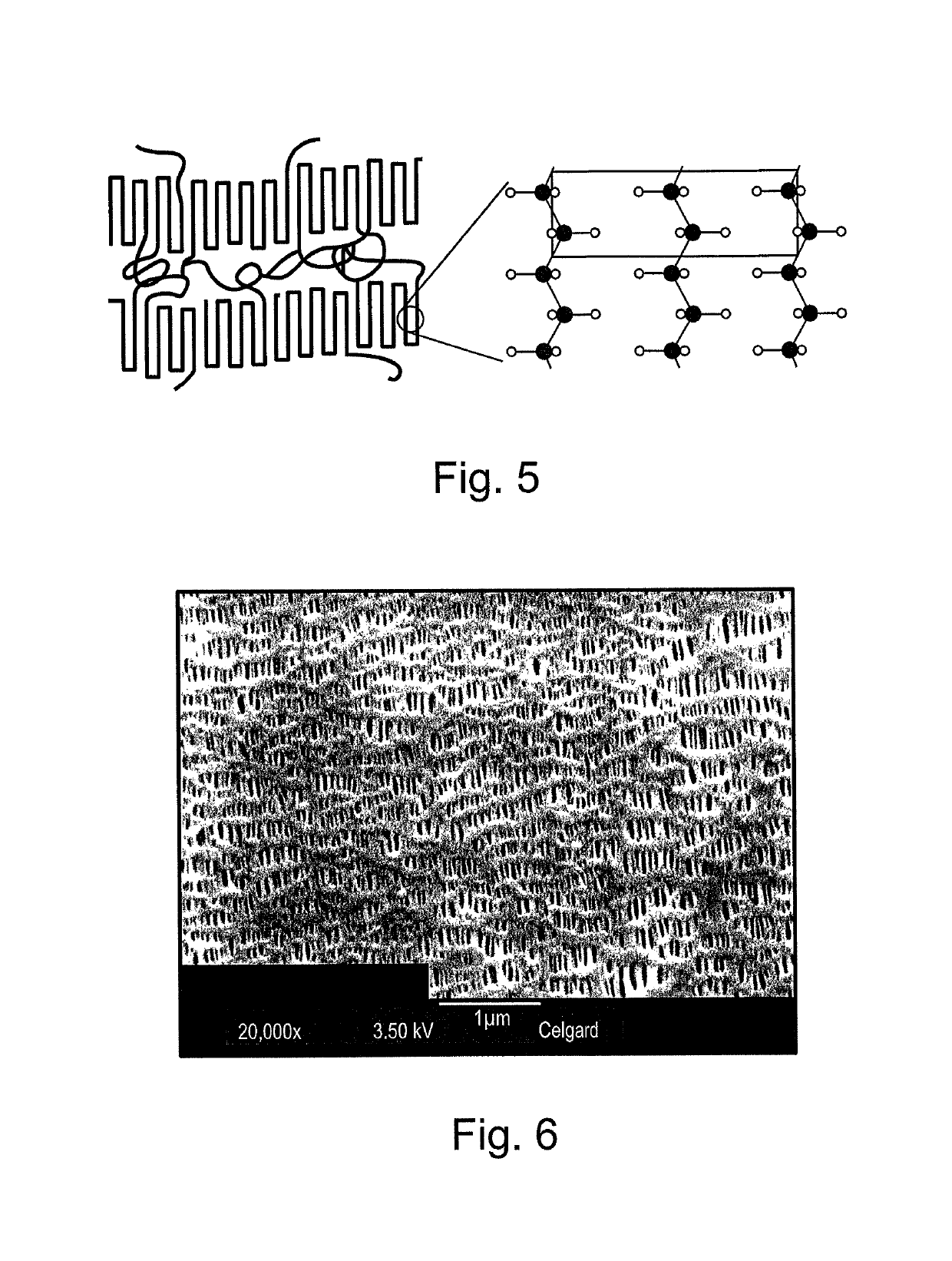Multilayer microporous separators for lithium ion secondary batteries and related methods
a lithium ion secondary battery and microporous separator technology, applied in the manufacture of batteries, cell components, final products, etc., can solve the problems of high energy cost, costly wet process, and potential environmental challenges, and achieve low gurley, high porosity, and low cost
- Summary
- Abstract
- Description
- Claims
- Application Information
AI Technical Summary
Benefits of technology
Problems solved by technology
Method used
Image
Examples
examples
[0042]Table 2. lists separator performance properties of twelve inventive examples Ex. 1-Ex. 12 (and for four comparative examples CE 1 to CE 4). The thickness of the inventive examples range from 14 μm to 30 μm which is the preferred targeted thickness range for EDV application.
[0043]
TABLE 2Separator Membrane Properties.ThicknessJIS GurleyER%PP PorePS,μmsec / 100 ccohm-cm2PorositySize, μmgfEx. 114.43201.239%0.029330Ex. 217.32901.241%0.031350Ex. 3202501.048%0.038400Ex. 4203201.347%0.032450Ex. 5253201.250%0.035450Ex. 6303501.453%0.036549Ex. 7122301.142%0.034280Ex. 8142101.044%0.039300Ex. 9162500.950%0.036350Ex. 10182501.144%0.040380Ex. 11181900.948.5% 0.048360Ex. 12252501.053%0.045420CE 116.73161.541%0.030325CE 2256202.539%0.028380CE 3205301.439%0.027360CE 4164602.035%0.032250
[0044]The inventive separator membranes are produced using a high molecular weight polypropylene resin. When this higher crystalline resin is melt extruded, the resulting nonporous precursor membrane has a high l...
PUM
| Property | Measurement | Unit |
|---|---|---|
| thickness | aaaaa | aaaaa |
| porosity | aaaaa | aaaaa |
| thickness | aaaaa | aaaaa |
Abstract
Description
Claims
Application Information
 Login to View More
Login to View More - R&D
- Intellectual Property
- Life Sciences
- Materials
- Tech Scout
- Unparalleled Data Quality
- Higher Quality Content
- 60% Fewer Hallucinations
Browse by: Latest US Patents, China's latest patents, Technical Efficacy Thesaurus, Application Domain, Technology Topic, Popular Technical Reports.
© 2025 PatSnap. All rights reserved.Legal|Privacy policy|Modern Slavery Act Transparency Statement|Sitemap|About US| Contact US: help@patsnap.com



